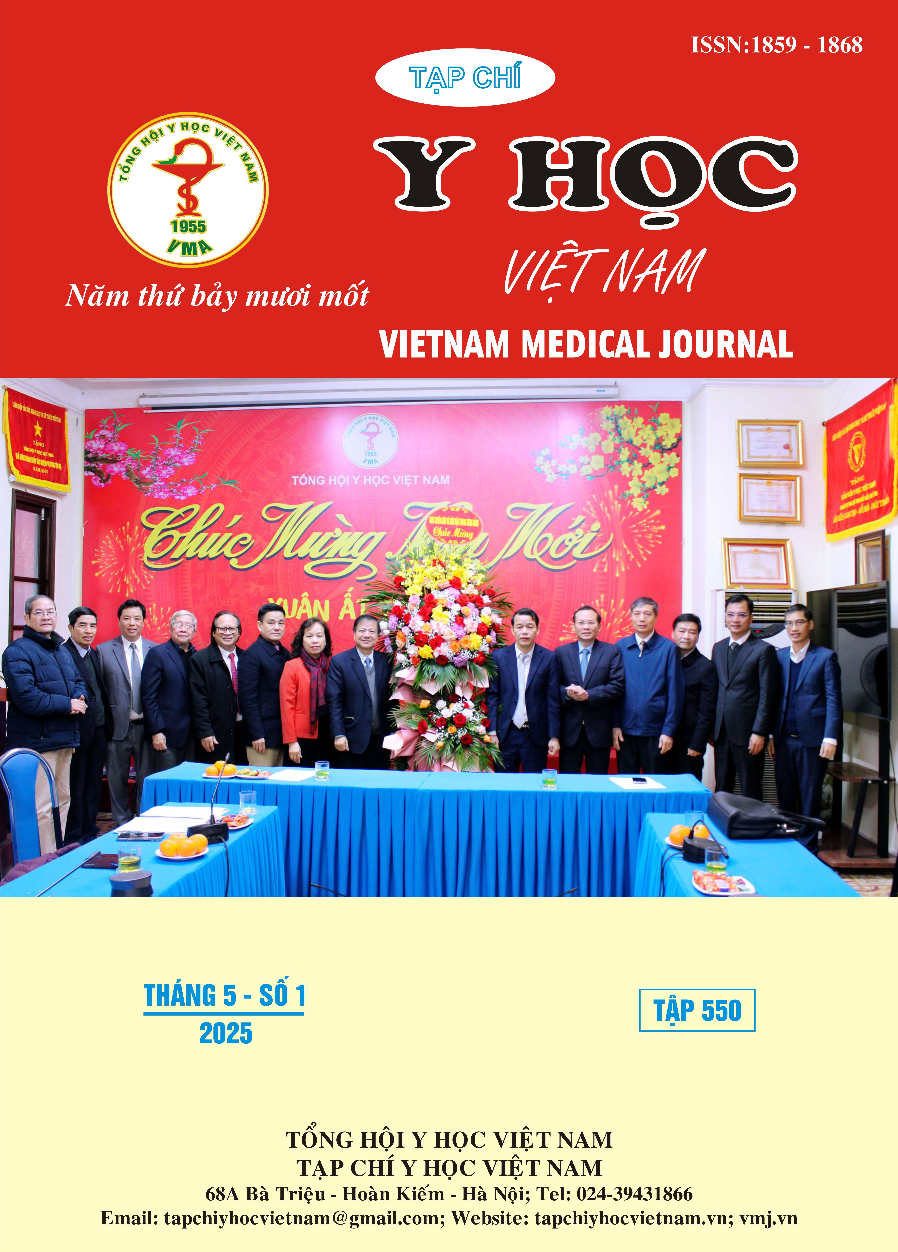SERUM LEVELS OF INTERLEUKIN-18 AND INTERLEUKIN-22 IN PATIENTS WITH STEVENS-JOHNSON SYNDROME AND TOXIC EPIDERMAL NECROLYSIS
Main Article Content
Abstract
Stevens-Johnson Syndrome (SJS) and Toxic Epidermal Necrolysis (TEN) are severe mucocutaneous disorders characterized by keratinocyte necrosis and epidermal detachment. Interleukin-18 (IL-18) is predominantly produced by keratinocytes and plays a role in the inflammatory response. Interleukin-22 (IL-22) is secreted by Th17 cells and primarily acts on epithelial cells. This cross-sectional study was conducted to evaluate the role of IL-18 and IL-22 in patients with SJS/TEN. Serum levels of IL-18 and IL-22 in SJS/TEN patients and healthy individuals were measured using a fluorescence covalent microbead immunosorbent assay. The study included 22 SJS patients, 39 TEN patients, and 18 healthy individuals. The results showed that IL-18 levels in the TEN group had a median of 2.997 pg/ml (interquartile range: 1.957 - 5.171 pg/ml), which was higher than that in the SJS group (median 1.957 pg/ml, interquartile range: 1.831 - 3.266 pg/ml) (p=0.042). IL-18 levels in the TEN group were also higher than those in the healthy group (median 1.957 pg/ml, interquartile range: 0.965 - 2.997 pg/ml) (p=0.007). IL-18 levels correlated with the affected body surface area in SJS/TEN patients, with r=0.326 (p=0.010). Additionally, IL-18 and IL-22 levels were correlated in TEN patients, with r=0.375 (p=0.019). These findings suggest that IL-18 may play a role in the pathogenesis of SJS/TEN, particularly in TEN.
Article Details
Keywords
Toxic epidermal necrolysis, Stevens-Johnson syndrome, interleukin-18, interleukin-22
References
2. Harr T, French LE. Toxic epidermal necrolysis and Stevens-Johnson syndrome. Orphanet J Rare Dis. 2010;5(1):39. doi:10.1186/1750-1172-5-39
3. Mühl H, Bachmann M. IL-18/IL-18BP and IL-22/IL-22BP: Two interrelated couples with therapeutic potential. Cell Signal. 2019;63: 109388. doi:10.1016/j.cellsig.2019. 109388
4. Wang X, Wang L, Wen X, Zhang L, Jiang X, He G. Interleukin-18 and IL-18BP in inflammatory dermatological diseases. Front Immunol. 2023;14. doi:10.3389/fimmu.2023.955369
5. Chiang HY, Lu HH, Sudhakar JN, et al. IL-22 initiates an IL-18-dependent epithelial response circuit to enforce intestinal host defence. Nat Commun. 2022;13(1):874. doi:10.1038/s41467-022-28478-3
6. Trần Thị Huyền, Phạm Đình Hòa, Phạm Thị Lan. High levels of serum interferon-gamma in patients with Stevens-Johnson syndrome/toxic epidermal necrolysis. Journal of Medical Research. 2020; 127 E6 (3):67-72. doi:10.52852/tcncyh. v152i4.703
7. Lopez DV, Kongsbak-Wismann M. Role of IL-22 in homeostasis and diseases of the skin. APMIS. 2022;130(6): 314-322. doi:10.1111/apm. 13221
8. Yoshioka M, Sawada Y, Nakamura M. Diagnostic Tools and Biomarkers for Severe Drug Eruptions. Int J Mol Sci. 2021;22(14):7527. doi:10.3390/ijms22147527


